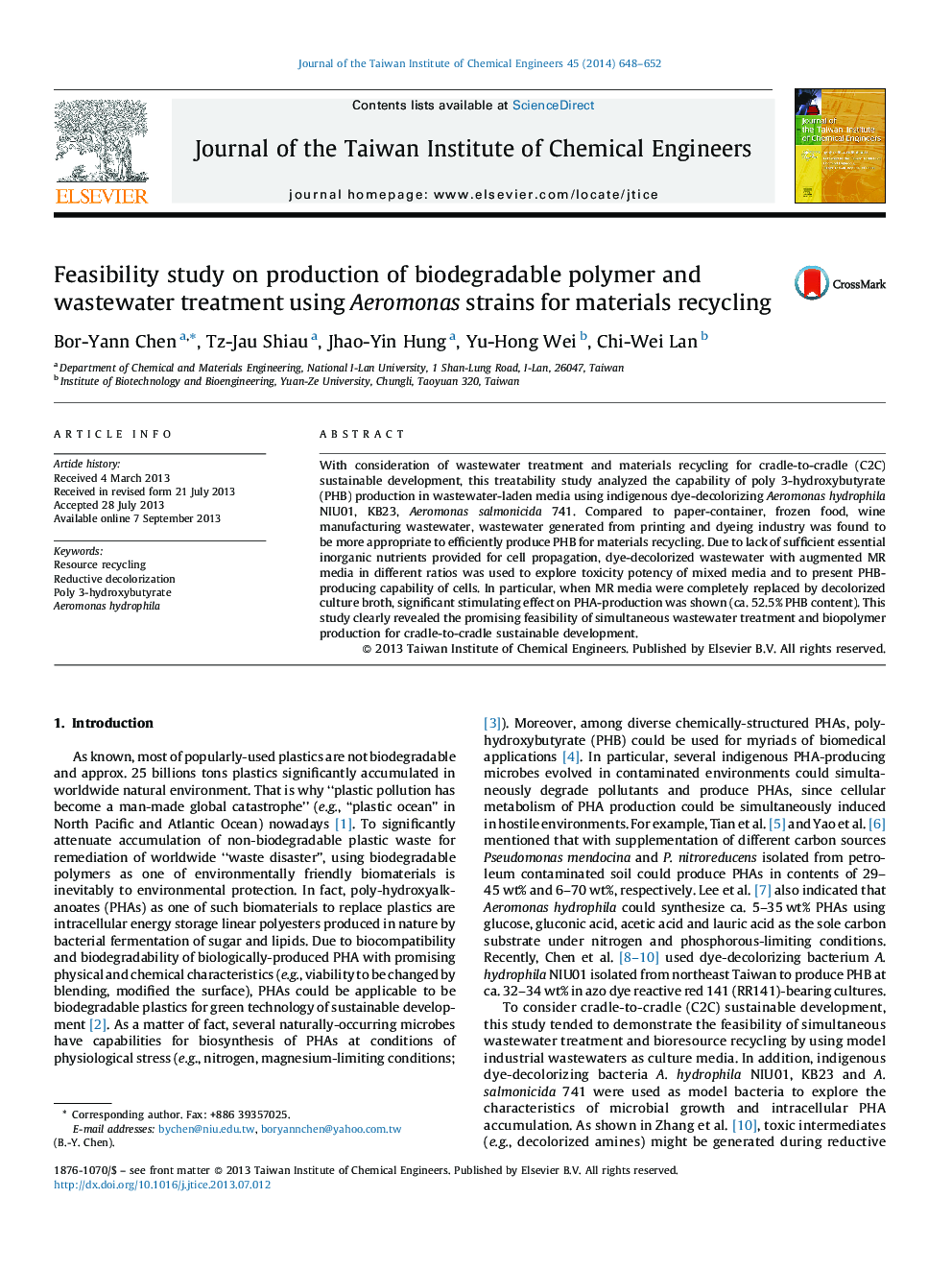| Article ID | Journal | Published Year | Pages | File Type |
|---|---|---|---|---|
| 691406 | Journal of the Taiwan Institute of Chemical Engineers | 2014 | 5 Pages |
•Unveil the feasibility of wastewater treatment and biopolymer production.•Present PHB-producing characteristics of Aeromonas strains.•Disclose dye-bearing wastewater bioavailable for biomaterials production.
With consideration of wastewater treatment and materials recycling for cradle-to-cradle (C2C) sustainable development, this treatability study analyzed the capability of poly 3-hydroxybutyrate (PHB) production in wastewater-laden media using indigenous dye-decolorizing Aeromonas hydrophila NIU01, KB23, Aeromonas salmonicida 741. Compared to paper-container, frozen food, wine manufacturing wastewater, wastewater generated from printing and dyeing industry was found to be more appropriate to efficiently produce PHB for materials recycling. Due to lack of sufficient essential inorganic nutrients provided for cell propagation, dye-decolorized wastewater with augmented MR media in different ratios was used to explore toxicity potency of mixed media and to present PHB-producing capability of cells. In particular, when MR media were completely replaced by decolorized culture broth, significant stimulating effect on PHA-production was shown (ca. 52.5% PHB content). This study clearly revealed the promising feasibility of simultaneous wastewater treatment and biopolymer production for cradle-to-cradle sustainable development.
